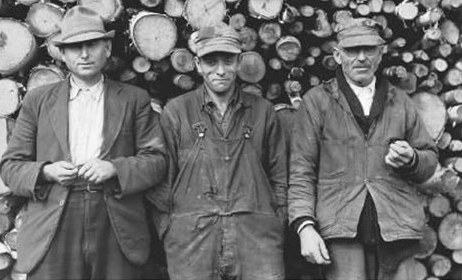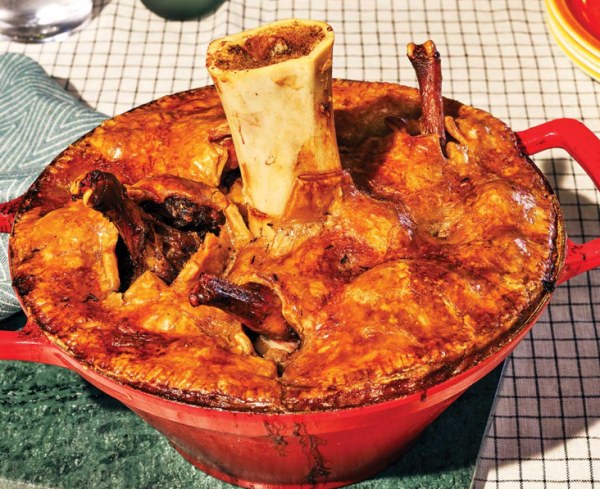Series Introduction (Move down if you’re familiar with the thread or don’t care)
In this series, we hope to highlight and showcase in as interesting a way as possible, the stories behind our favorite, mouth-watering local dishes. While we’ll focus on greater New Bedford and the South Coast, we will occasionally “travel” to places like Plymouth, Providence or even Boston. I will attempt to keep it light-hearted, fun and easy to read. While I can’t promise to keep you compelled and pull you along with prose – that would take a professional writer – I will promise to be liberal with the drool-inducing images of these dishes.
I grew up in a Sicilian household where everyone – man, woman, child – was participating in preparing meals. It was a “trick” to get everyone together, talking, laughing and of course, the occasional heated debate. Food was a huge part of our identity, where we came from, who we were. There was something special about the atmosphere that revolved around a meal that we prepared.

This is certainly not unique to an Italian or Sicilian household. Every ethnic group in the country has a proud culinary tradition that they grew up around. You can easily replace “Sicilian” with Irish, Vietnamese, Portuguese, Ethiopian, Greek or anything else. This is why food as a topic is always so popular. We humans love our food and that passion goes beyond the gustatory or taste – we crave the aromas, delight in the presentation, are fueled by the atmosphere, and relish – pardon the pun – discussion about our favorite dishes, restaurants or cuisines.
One thing that is often not discussed – is glossed over, or barely touched upon – is the history or background of these dishes. Now, to some, this conjures up the voice of the guy from the “dry eyes” commercial. The terms, for many, are synonymous with “boring,” “dull,” or “It’s time to go.” However, the background can be interesting, fun, or funny and it can be so without being facetious, dumbed-down or popular. I will make every attempt to maintain a fresh balance with those elements in this series.
As always, feedback is encouraged. Anecdotes are wanted. Discussion is paramount. Please join in!
Since the past few installments in this series highlighted Portuguese and Hispanic cuisine, I figured we’d switch gears and tackle a different ethnic community: the French Canadians. Thanks to them we have glorious, glorious French Meat Pie a favorite dish certainly not limited to the holidays or after church on Sunday – any day of the year is a good day for some meat pie!
As is the case with most of a specific heritage’s favorite dishes, this is a dish that appears to be quite simple on the outside. However, as we all know what is in a dish is a small factor in its deliciousness – other factors include freshness and quality of ingredients, how each ingredient is treated, and the all-important ingredient: love.

French Meat Pie has its roots in the festive Réveillon at end of the year festivities.
Traditionally made by mémère for end of the year festivities, after special religious events like baptism, communion or after Midnight Mass, or specifically when it comes to Canada, as part of a réveillon the long Christmas Eve dinner or on New Year’s Day. The name means “waking” which refers to staying up super late to get our grubby hands on the savory, loaded with Umami, meat pie with a flaky, buttery double-crusted crust. My mouth is watering just thinking of it.
We call it a French Meat Pie in our neck of the woods because of the area’s history and large French-Canadian population, but the meat pie actually traces back to the Mesopotamians in the 16th century B.C.E. Even the Romans had a love affair with it and showing up in their cookbooks as “La Patina.” Throughout most of the world, you will find some version of the meat pie whether variations of a proper pie like the British cipaille or Sea-Pie, tarts, or smaller versions like the Indian samosa or hand-held like empenadas. Modern variations include Meat Pie Triangle using the super thin Phyllo dough and even Spring Rolls.
Well, who cares about them?! We’re discussing the contemporary version from our friends up north! There’s no telling how old the French Meat Pie was when it comes to Canada but it started showing up in historical documents in the 1600s and originating in Quebec with the earliest settlers celebrating the aforementioned réveillon before spreading all over Canada. Réveillon itself traces back to France where it was a veritable feast on Christmas Eve that included many dishes, sweets, and wine, naturally.
While we immediately think of pork or even beef as the primary filling, in Canada there are many regional variations which can be veal, pigeon, moose, rabbit, pheasant, mutton, game, salmon, or a mix of seafood. Some recipes call for the filling to be solely meat, others include potatoes. All these variations have added fuel to the fire when it comes to claims of authenticity or originality but in reality, there is no such thing as an authentic version. About the only thing, people can agree on or not debate over is that the dish used to bake the pie is typically deep and ceramic.

There are variations of the French Meat Pie all over the world including the British Cipaille or Sea-Pie.
The debate doesn’t stop at the filling and extends itself to the seasoning, crust, gravy and what should accompany it. Some say keep it safe with salt, pepper and sage. Others recommend herbs and/or spices like sage, allspice, nutmeg, clover, and cinnamon. With the crust would it be safe to say that a bad crust can ruin the whole pie no matter what meat is chosen to fill it? That crust will make or break that pie and playing around with that is a good way to place a dark cloud over festivities and have everyone pointing the finger at the communist who baked it.
Like we Italians and our red sauce recipes (please, it’s not gravy – people who call it that are goombas or watch too much The Sopranos) the French-Canadians and the French-Canadian…um, Americans, have recipes that have been passed down as heirlooms through generations. Generations where it has been perfected. Hard to believe in the day and age of pre-made packets of gravy, but traditionally it was made from scratch – just as some people still do today.
There are rumors of communist activities in the area: people who don’t put gravy on their French Meat Pie, but ketchup. For this sort of behavior the the corrective and curative remedy is ostracization or banishment from the community after they spend the larger portion of the day in stockades or a pillory in a public square.
The final aspect that causes argument is what should be served with it? Mashed potatoes so you have an excuse to smother something with gravy even more? Peas?
In my opinion, the best way to end these debates is to have an annual New Bedford French Meat Pie Fest as we have with Chowder. We can have categories like the best traditional, most innovative, and best gravy as we eat ourselves into foodie bliss.

One French-Canadian dish that I wish would catch on locally is poutine. While I have seen it served locally no one is doing anything remotely close to authentic. Some Americans apparently think cheese is the same as curds – it’s not.
There have been a number of retail producers and one that comes to mind immediately is Antil’s that used to be at 249 Adams Street in Fairhaven next to the Oxford Pub. While that business closed I have seen their pies show up in supermarkets.
Not that it matters, because everyone knows that mémère makes the best. If you don’t have a mémère you likely know someone who does or know someone who has a golden recipe since the French Meat Pie has become so popular that it has been assimilated into local culture and Americana. In this area, it’s almost as American as Apple pie.
Now that I’m thinking about it, we should change that saying “As American as French Meat Pie.” I’d take a French Meat Pie with gravy over and Apple Pie and day of the week.
What do you think is the most important part of the pie? Filling? Crust? Gravy? Sides? How about the easiest part to ruin?
Enjoy this type of article? You can read the other ones in the series here.
 New Bedford Guide Your Guide to New Bedford and South Coast, MA
New Bedford Guide Your Guide to New Bedford and South Coast, MA









